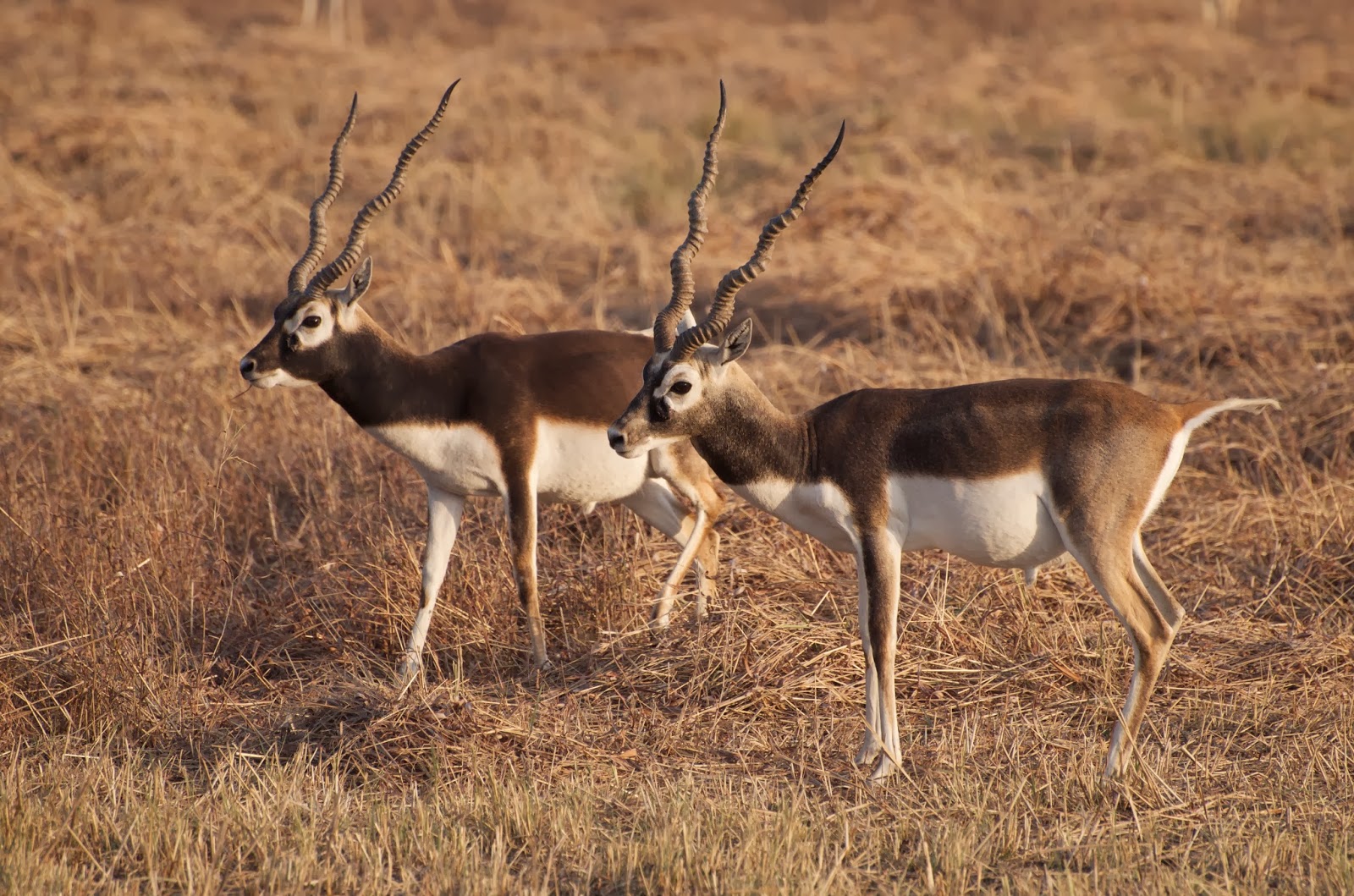OK, so I am back to blogging now… and this one goes out especially to my in-laws, who love wildlife.
We have just returned from a short weekend in Gujurat where we stayed at the heavenly Blackbuck Lodge in Velavadar (see the next post for details).
The National Park here is one of a handful of places where you will find the near endangered Blackbuck antelope. A most beautiful creature with prominent markings which include a white ring around the eye and spiralling, cylindrical horns. There are around 3,000 blackbucks in the park and seeing them was easy. You can also find hyenas, wild boar, nilgai, wolves and jungle cats in the park, although unfortunately we missed the hyenas. We witnessed a plethora of birdlife – Mr Jules probably spotted over 80 species of which around 20 were new to him (phew, he was happy then!)
 |
| Stunning blackbuck stags with their very distinctive markings. |
The landscape at Velavadar was so very different to the jungles that we have experienced so far. Very flat and grassy, with a smattering of acacia trees dotting the park. It has been compared to African Savannah – which I guess is not too far wrong. The knee-high grassland means that it is easy to spot the blackbuck (even when they lie down, you can still see their antlers poking out of the grass) but not so easy to see anything smaller. It was thanks to an eagle-eyed friend who came with us that we saw the jungle cat, as it was very well camouflaged in the yellow straw-like grass.
For me, this was another opportunity to improve my wildlife photography skills – which I tend to struggle with. But I have a new 70-300mm Nikkor lens for my Nikon D7000 which I found a lot easier to control than the the 80-400mm lens that I hired on the last safari. Baby steps!
Here is a selection of photos….
 |
| Brown shrike |
 |
| And again… |
 |
| White-throated kingfisher |
 |
| Two male Nilgai having a tussle |
 |
| A young male blackbuck (juveniles are brown) leaping across the road |
 |
| Bee-eater |
 |
| Nilgai – a type of antelope which are almost pre-historic in appearance. Their heads are way too small for their bodies! |
 |
| Two young blackbuck stags |
 |
| A young stag between two older ones |
 |
| Lapwing |
 |
| Incredible sight of hundreds of pelicans at the waterhole |
 |
| Our guide and driver – not particularly worried about wearing bright colours on safari! |
 |
| Pelican in the reeds |
 |
| Wild boar (or Dave Lee Travis as I called him) |
 |
| Stunning sunsets at the waterhole |
 |
| Early morning – egret perched on nilgai |
 |
| Next few photos – two stags having a barney… |
 |
| …then friends again |
 |
| Hen Harrier coming into land |
 |
| Kestrel surveying the land. We also saw short-toed snake eagles but they were too far off to snap. |
 |
| Look closely or you’ll miss it! Jungle Cat |
 |
| Our guide in more trendy clothing |
 |
| Kestrel taking off |
 |
| Pond Heron |
 |
| View from our verandah – street dog and blackbuck in the distance |
 |
| Pond Heron in flight |
 |
| Male sunbird |
 |
| Rose-ringed parakeet |
 |
| Yellow Wagtail |
 |
| Liked the starkness of the hide against the landscape |
 |
| Wild boar – running through the grassland after a swim |
 |
| Two young stags and an umpire |
We flew from Mumbai to Bhavnagar in Gujurat on Jet airways – the flight is less than an hour (you start to land not long after take off!). We then took a car from the airport to our accommodation near the park (see my next post) which was only a one hour drive. Unfortunately the return flight is at 10.15 am which means that you lose a day at the resort.
For the safari, we hired our jeep and guide through the hotel but you still need to pay park entrance and camera fees on top (ten times as much for the foreigner of course).
This is a highly recommended getaway from Mumbai!
More info here: http://www.gujarattourism.com/showpage.aspx?contentid=239













